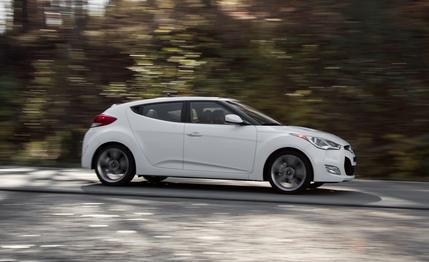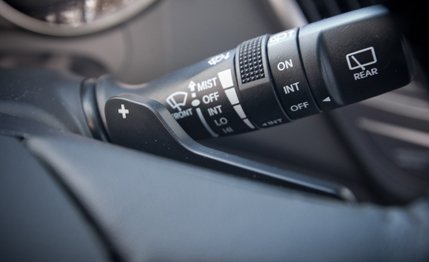 Instrumented Test
Instrumented Test


About that name. It could be rooted in the word velox, Latin for swiftness or speed, as in velocity. (Think velocipede, velociraptor, Velocette, Veloster.)
If that’s the source, our first trip to the test track with a Hyundai Veloster [December 2011] suggests that the name was invented by someone drawing inspiration from the uninhibited sheet metal and certainly not acceleration numbers: Zero to 60 mph in 8.5 seconds isn’t swift, and a quarter mile in 16.7 at 84 mph isn’t speedy.
But wait, here’s a Veloster with Hyundai’s first-ever dual-clutch automatic (a $1250 premium), officially the “EcoShift dual-clutch transmission”—DCT for short. Our experiences with dual-clutch units such as the VW/Audi DSG versions have been compelling in terms of performance and driver gratification.
But that’s not the case here.
It took our DCT test car 9.1 seconds to hit 60 mph, and it struggled past the quarter mile post in 17.0 at 83 mph. Pretty tepid, even by the modest standards of some of the Veloster’s targets—the basic Mini Cooper, the Mini Cooper Clubman, and the Honda CR-Z. And it’s downright glacial compared with the Scion tC, another target car.
But that’s not the big disappointment. It’s the DCT’s function that left us most frustrated. Instead of the expeditious shifts of, say, VW’s DSG, Hyundai’s DCT delivers them at the what’s-your-hurry pace of a conventional automatic, and a very ordinary one at that. This applies whether the operator selects manual or automatic mode. Launches are similarly deliberate, and the paddle shifters, which rotate with the steering wheel, don’t improve the experience.

Other dynamic elements of this car fortify the impressions of the manual model we tested in December: electric power steering that’s quick but secretive at low speeds and reluctant in terms of self-centering, an obedient chassis, and suspension tuning dialed up for decisive responses (though ride quality could benefit from moving down a couple of clicks on the bushing durometer scale).
Although its EPA ratings (29 mpg city, 38 highway) are comparable to those of the manual version, the DCT did give us better observed mpg: 28 mpg versus 25. But that’s not enough to make life with this new transmission any more attractive.
What will make the Veloster more attractive, with performance to vindicate the visual flash, is the arrival this spring of a 204-hp turbo version of its 1.6-liter, direct-injection four, a gain of 66 horsepower. Even better news: It’ll be available with a conventional six-speed manual. We don’t know yet how much that 66-hp bump will cost. But there’s not much doubt that a Veloster with some real velox will emerge.